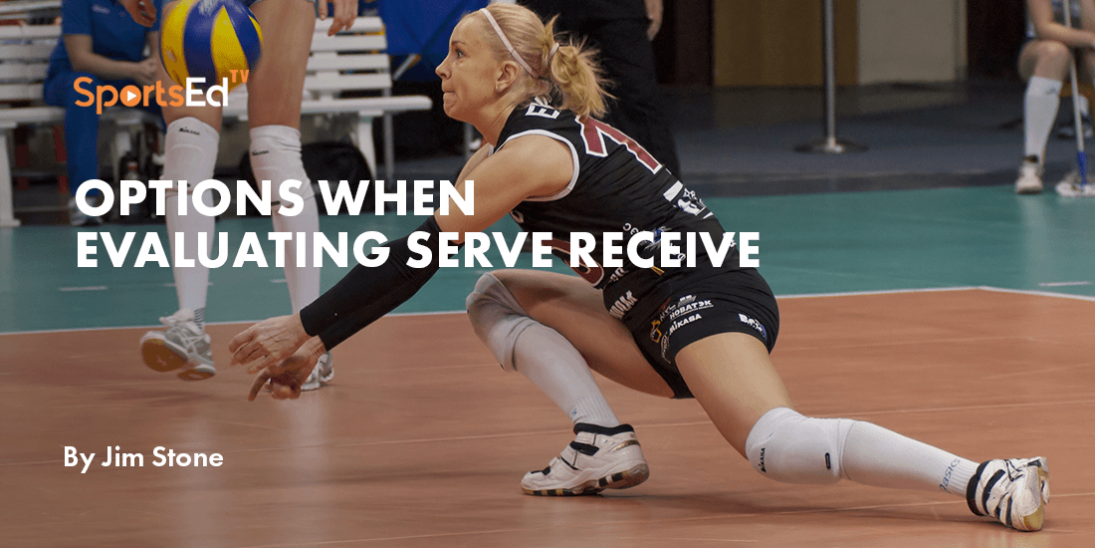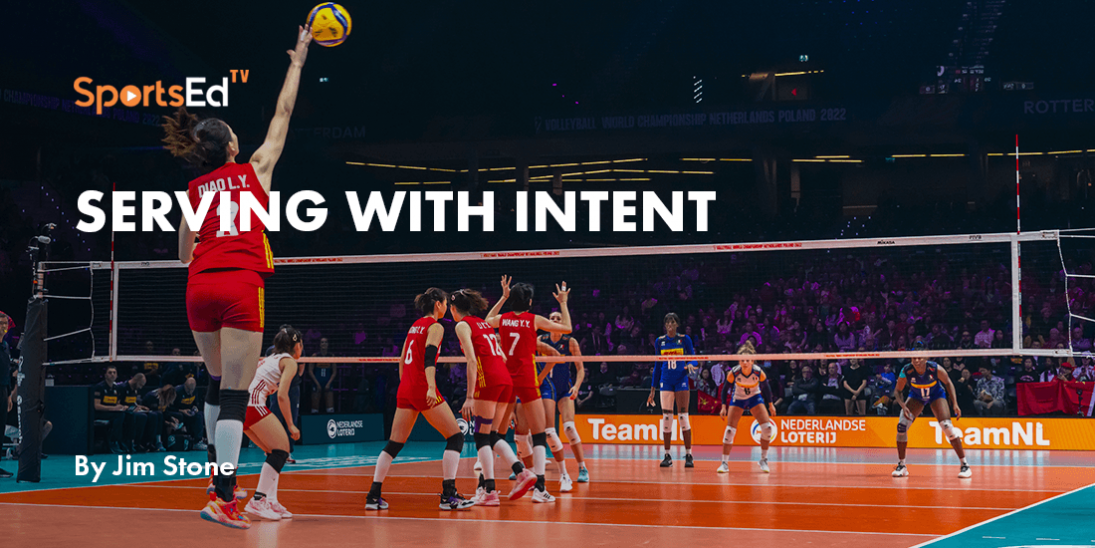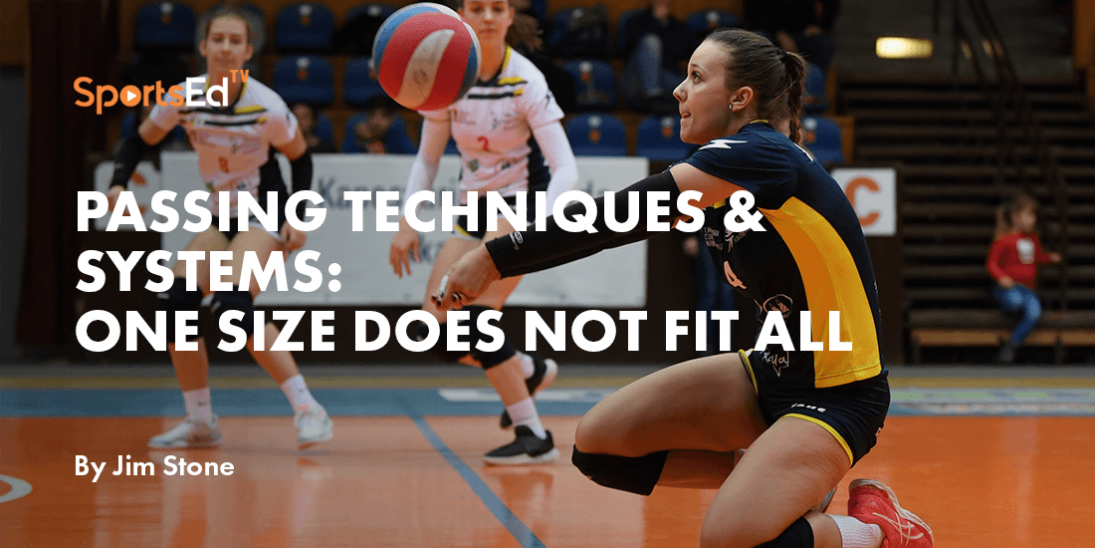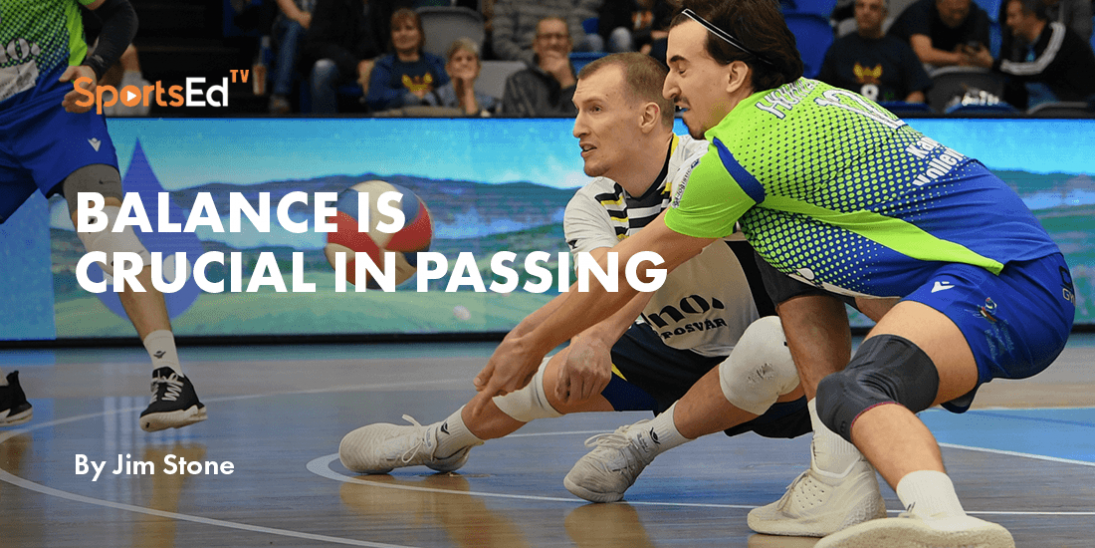Volleyball
Welcome and thanks for visiting...

How to Set in Volleyball
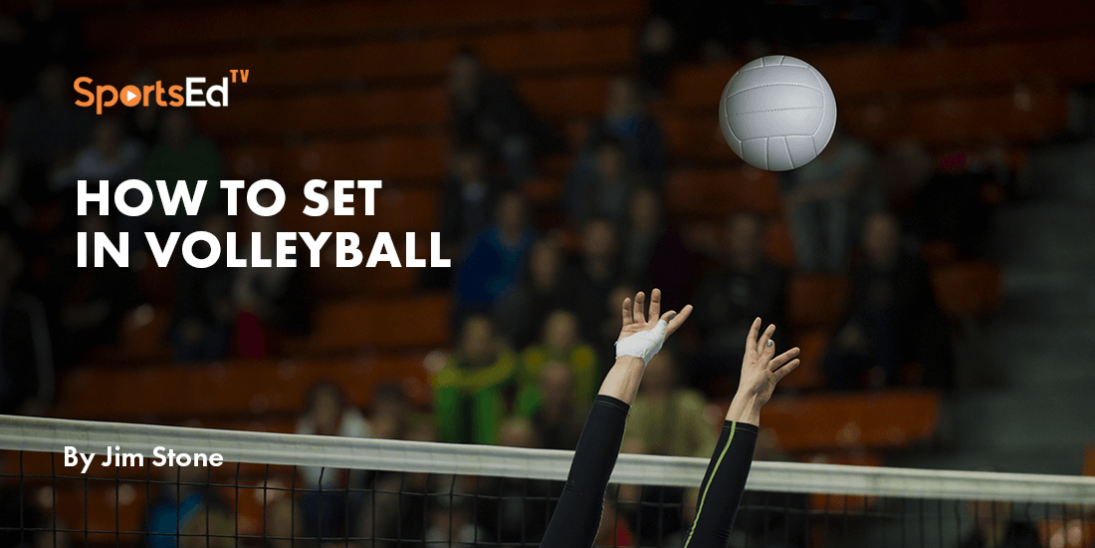
The success of most volleyball teams is, in large part, dependent upon the abilities of the setter. Given that the setter will touch the ball more than any other player, the setter impacts the events on the court more than any other player. A player with this responsibility must possess a keen knowledge of tactics, be technically proficient, and possess consistency in performance.
Much of the content for this article is taken from my book, "A Game Plan for Better Practices." One of the themes in my book is the use of checklists to organize instruction and the technical development of a player and teams. In this article, I will replicate some of the checklists to assist in the learning process. The focus will be on the technical aspects of the skill of setting. We will examine the footwork to the ball, hand-ball contact and follow-through, jump setting, back setting, the setter attack, and creating offense from an imperfect pass.
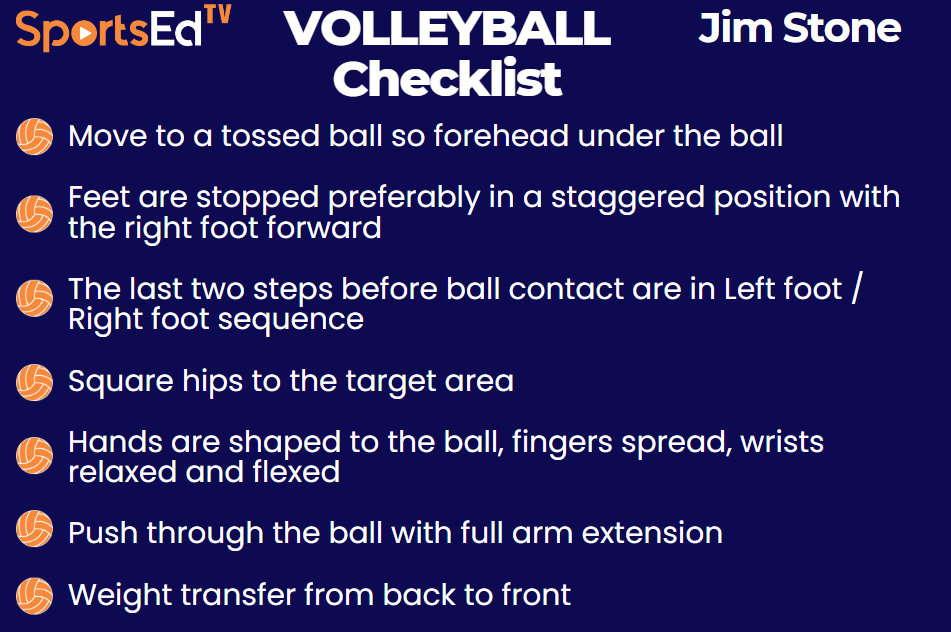
Footwork and Weight Transfer in Volleyball Setting
Whenever I teach any skill, I begin with footwork and work toward the upper body movements. When working with setters, I present multiple footwork patterns to allow the setter to move efficiently and athletically around the court. The foundation of all footwork patterns is a basic Left-Right foot pattern that allows for consistency of execution. The sequential pictures below demonstrate the core elements of the set.
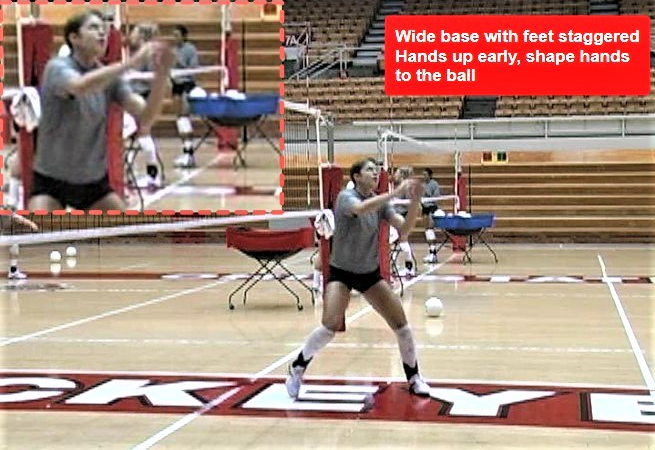
Picture #1 Face the incoming pass with the right foot forward;
hands are shaped to the ball in preparation for ball contact
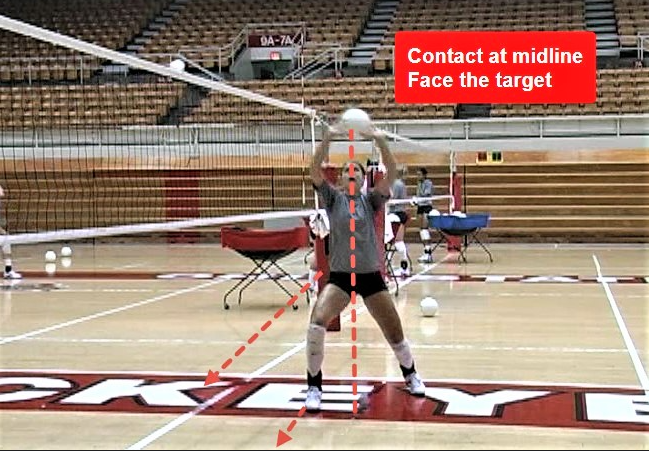
Picture #2- Rotate hips so the toes, hips, and shoulders face the left front target area.
The ball is contacted at the body midline, directly above the forehead.
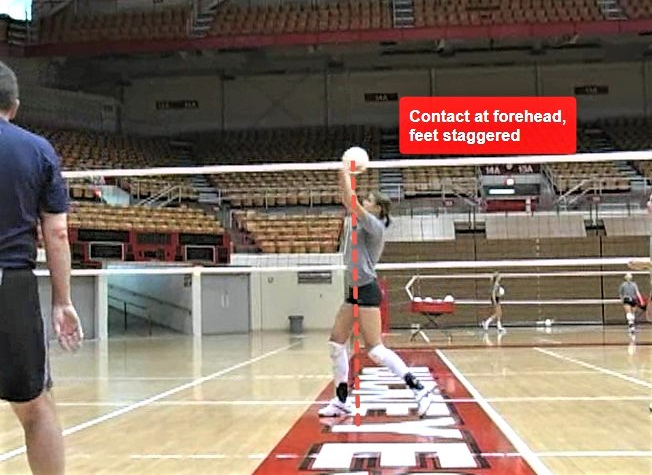
Picture #3- Right foot forward, contact ball directly at the midline.
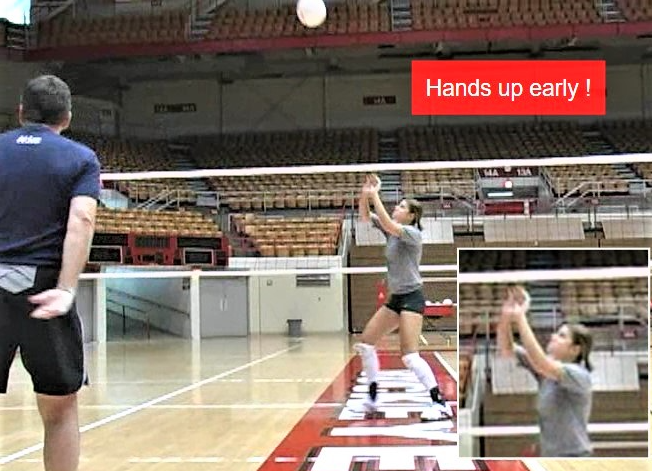
Picture #4- The hands are shaped to the ball.
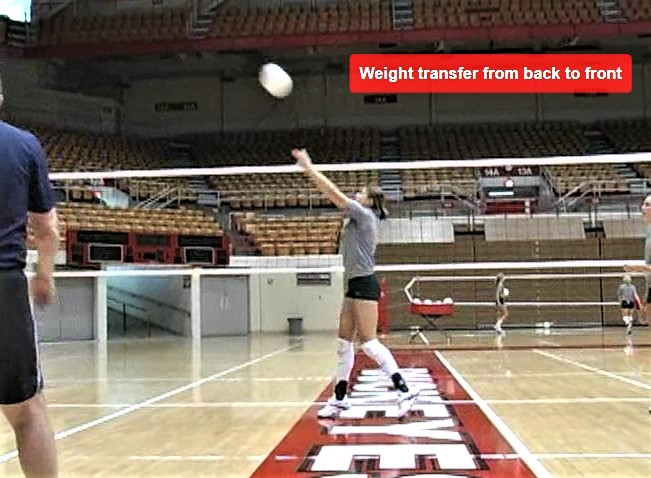
Picture #5- The weight transfers to the right foot (front foot) and extends the arms to the target area.
Hand Position on the Ball when Setting in volleyball
The hand position for setting is relatively simple. You want the hands to be in a similar shape as the ball, with the fingers comfortably spread and relaxed wrists. The hands maintain a relaxed and cupped shape before ball contact and release. The video below demonstrates the correct hand position on the ball. The hands will surround the ball and keep the relative shape on release. Notice the extension of the hands and arms in the ball flight path.
The Backset and Setter Attack
In the video below, USA National Team setter, Lauren Carlini, demonstrates the critical aspects of the jump set, the backset, and the setter attack. Of particular note is Lauren's discipline with squaring her hips to the left front before ball contact and contacting the ball directly above her forehead at the midline of her body.
Out-of-System Setting
In the final video, USA National Team setter, Jordyn Poulter, presents how to effectively set the "out of system" pass. Setters must effectively set the ball that forces a change of posture or takes them away from the desired target area. If the pass to the setter is low, the setter must drop under the pass to make an accurate set. If the pass prevents a handset, the setter must forearm pass the ball accurately to the attacker.
Volleyball Setter Checklist
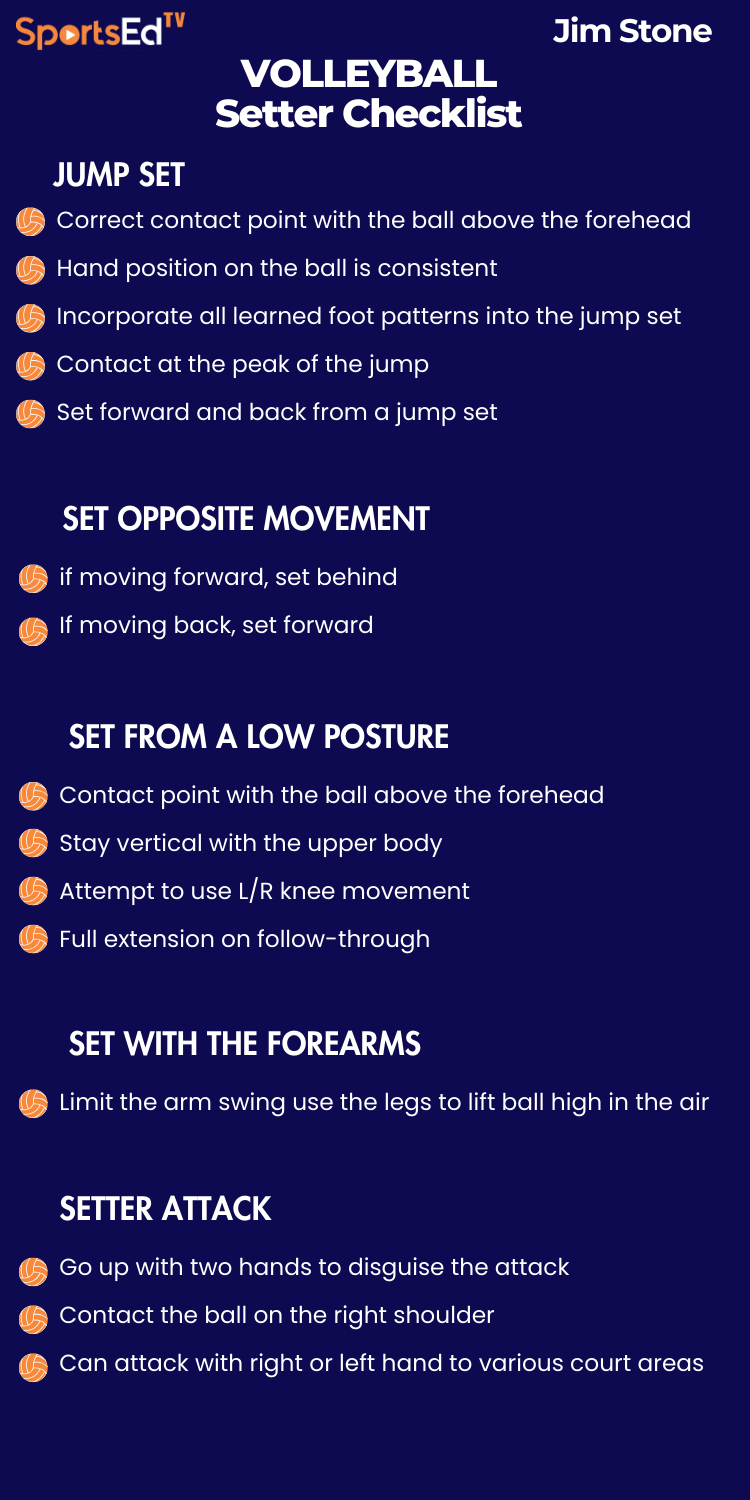
The setter must put in many hours of training to gain the consistency and accuracy required to run an effective offense and maximize the abilities of their attackers. Using checklists can assist the setter in focusing on specific aspects of the skill. I also encourage the use of video to allow the setter to monitor their progress in footwork, hand position, and follow-through. All teams of high quality have skilled setters. The time invested in developing setters will be essential for team success.




